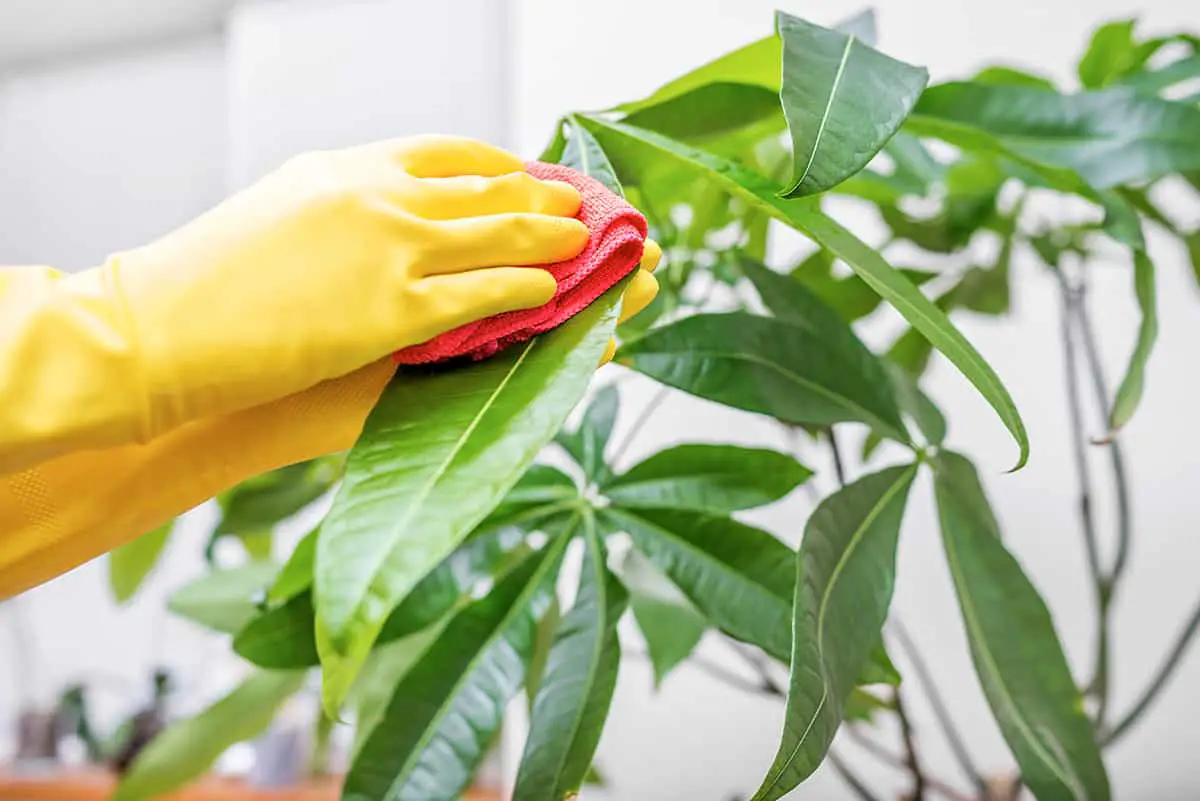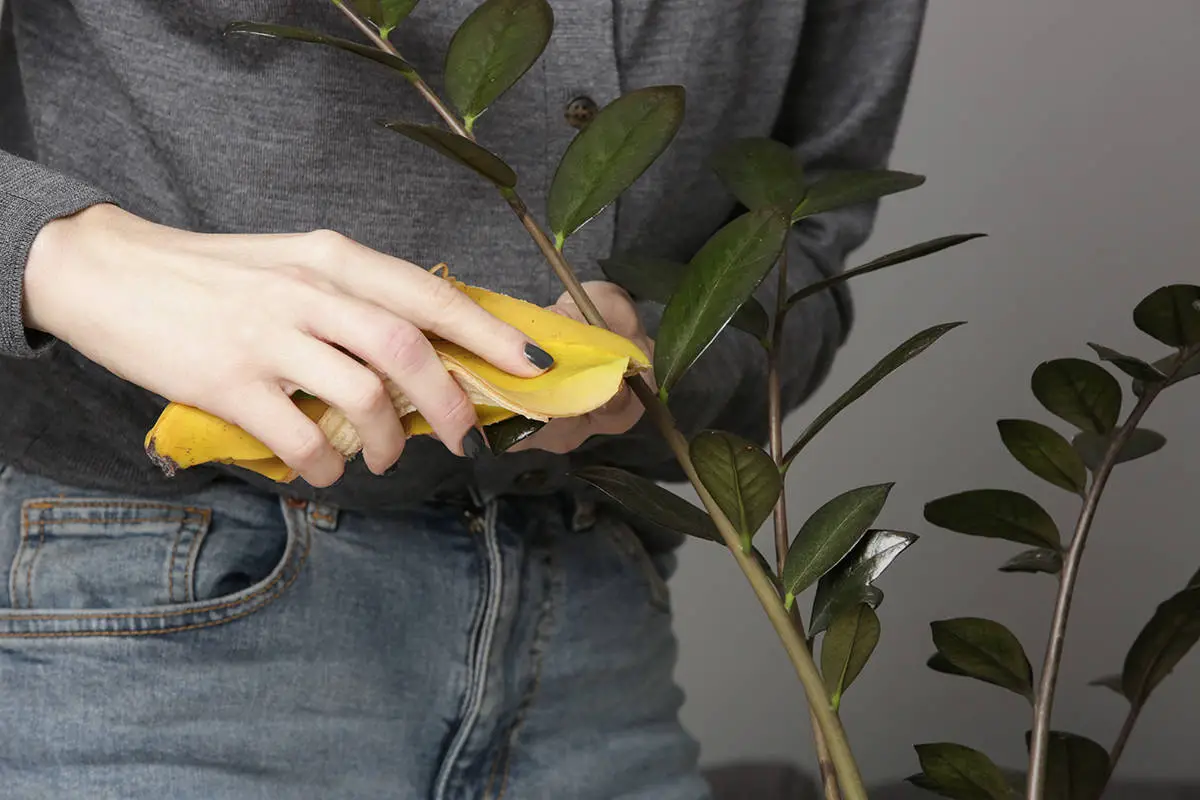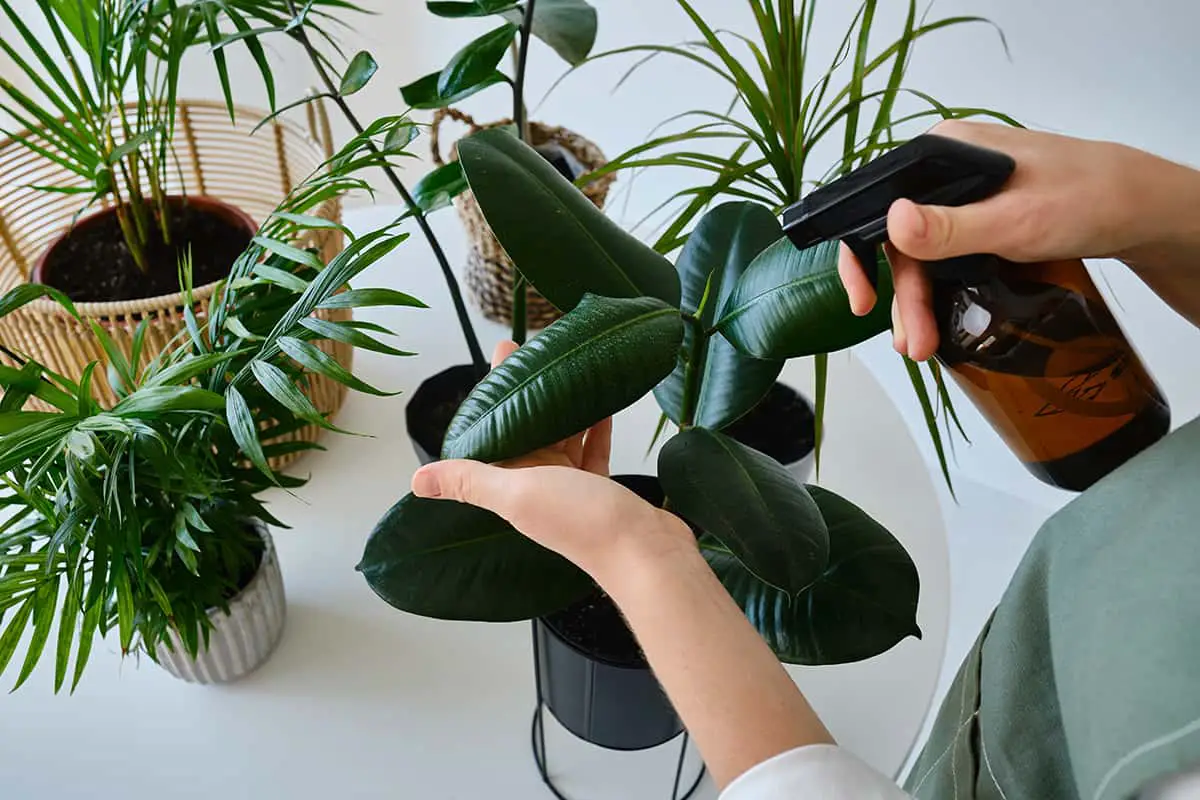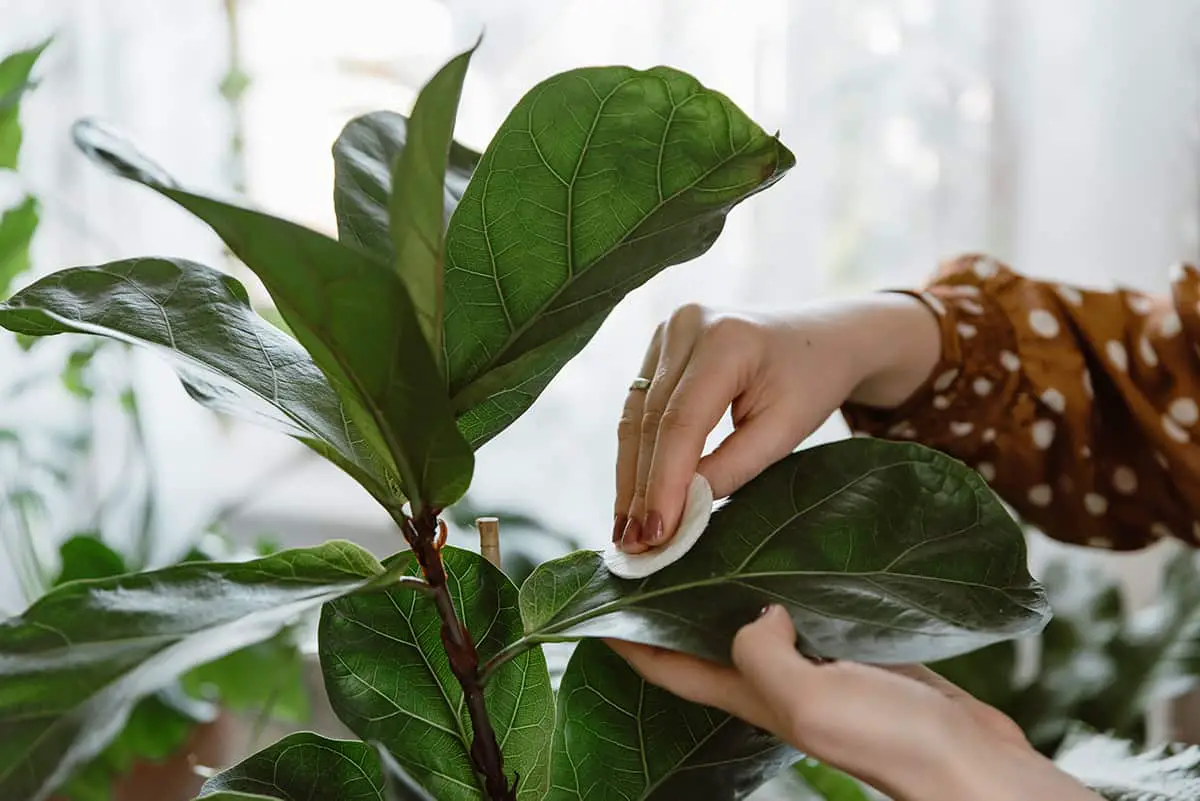As you tackle your weekly dusting routine, don’t forget your leafy roommates. Just like furniture, houseplants collect dust that can hinder their growth and health by blocking sunlight and clogging pores. Regularly cleaning the dust off your plants not only keeps them looking fresh but also supports their ability to photosynthesize efficiently, ensuring they thrive. Here’s why it’s essential and how to do it right.
Table of Contents
Importance of Cleaning Dust off Houseplants

Photosynthesis Efficiency
Dust can accumulate on your houseplants’ leaves, which hinders their ability to photosynthesize. When the sunlight is blocked, the plant’s efficiency decreases. To maintain optimal growth, you need to clean the leaves regularly. This prevents stress and ensures proper nourishment for your plants.
Pest Prevention
If you keep your houseplants’ leaves clean, it helps to prevent diseases and pests. A healthy plant is better able to avoid infestations and diseases, ensuring a vibrant, long-lasting houseplant. In contrast, plants covered in dust are more susceptible to such issues, which can ultimately lead to their decline.
Aesthetic Appeal
Cleaning your houseplants not only promotes their health but also enhances their overall appearance. Dust can obscure the beauty of your plants, making them look dull and lifeless. By removing the dust, you expose their vibrant colors and patterns, thus improving the aesthetics of your home or office space.
Understanding Dust Accumulation
Common Dust Sources
Dust is a common household issue, and it can accumulate on your houseplants as well. Some of the main components of dust include dead skin cells, hair, mites, and soil particles. These debris can make their way onto your plants from the environment, air filters, and even daily activities like cleaning or pet grooming.
Effects on Plant Health
When dust settles on the leaves of your houseplants, it can create a significant problem for their overall health. The photosynthesis process, through which plants generate nourishment, relies on the ability to absorb sunlight. Dust on the leaves can block sunlight, reducing the plant’s ability to conduct photosynthesis effectively.
Cleaning Dust Off Houseplants

Wipe with a Damp Cloth
To clean houseplants with large leaves, you can easily use a damp cloth. Mix a few drops of mild dishwashing soap in lukewarm water to create a gentle cleaning solution. Dip a soft cloth or sponge into the solution and gently wipe each leaf. Be sure to clean both the top and bottom surfaces of the leaves. This method is not only effective for removing dust but also helps to remove pests.
Shower Your Plants
Another method to clean houseplants is by giving them a shower. Place your plants in the sink or a shower. Gently spray lukewarm water on the leaves, making sure to adjust the pressure and temperature before spraying the plants. This method is particularly effective for larger plants, which may be difficult to clean using a cloth.
Using Compressed Air
For plants with very delicate leaves or intricate structures, using compressed air is an effective method for removing dust. Hold the compressed air canister at least 12 inches away from the plant and gently apply short bursts of air to dislodge the dust. This technique can effectively clean hard-to-reach areas without damaging the plant.
Use a Spray Bottle
To clean dust off houseplants that are more sensitive to moisture, use a spray bottle filled with distilled water. Lightly mist the leaves, being careful not to oversaturate them. This method is particularly useful for plants like cacti and succulents, which don’t tolerate excessive moisture well.
Leaf Shine Products
Several commercial products are available for cleaning and adding shine to the leaves of houseplants. These products can be applied to leaves using a soft cloth or sponge. However, it’s important to use them sparingly, as they may contain chemicals that could harm your plants if applied too frequently. Always read and follow the instructions on the label.
Feather Duster
Using a feather duster is another simple and effective method to clean dust off houseplants. Gently brush the duster across the leaves and stems of your plants. This method is best for plants with smaller, more delicate leaves that may be difficult to clean using other methods.
Dry Dusting with a Soft Brush
When moisture is not suitable for cleaning your houseplants, consider using a soft brush, such as a toothbrush or makeup brush, to gently dust the leaves, stems, and other parts of the plant. This method is particularly effective for cacti and similar plants, which should not be dipped in water or cleaned with a damp sponge, as suggested by Penn State Extension.
Frequency of Cleaning

Ideally, you should clean your houseplants every month. However, this may vary depending on the environment and the type of plant.
To determine the cleaning frequency, monitor your plants closely and adjust the schedule if you notice a significant dust build-up. For instance, if you live in a particularly dusty area or have indoor pets, you might need to clean your plants more often. Additionally, plants with larger, smoother leaves tend to attract more dust, so they may require more frequent cleaning.
Safety Measures

Delicate Plant Handling
When cleaning dust off your houseplants, handle them with care. Some plants have more fragile leaves, so be gentle when touching them. Avoid rubbing too hard or using rough materials. Instead, try using a soft cloth, sponge, or a soft-bristled brush to remove dust and dirt.
Choosing Safe Cleaning Agents
For houseplants, it’s crucial to pick safe and gentle cleaning agents. Refrain from using harsh chemicals or products containing bleach, as these can damage the plant’s delicate structure. Instead, opt for mild soapy water or a homemade solution with a few drops of dish soap mixed in water. This combination is generally safe for plants, effectively removes dust, and maintains their health. However, test the cleaning agent on a small portion of a leaf before applying it to the entire plant to ensure it reacts well. Another option is to simply use a damp cloth with plain water to wipe away dust and debris.






